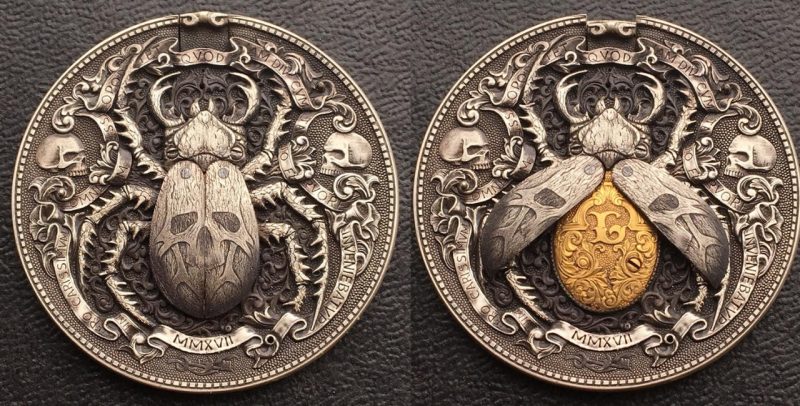The art of the hobo nickel, the 18th century practice of carving unusual images into small, low-denomination coins, is arguably more popular than ever. This intricate art form involves inscribing images by hand into coins and other small metal objects, in order to create inventive new designs.
However, according to My Modern Met, many contemporary artists are taking this historic art form to new levels, by creating elaborate mechanical sculptures that are hidden within seemingly innocuous coins.
Russian artist Roman Booteen is a master in the practice of transforming simple coins, creating extraordinary moving sculptures that are only revealed using hidden triggers embedded in the coins themselves. One of his latest creations, titled Gold Bug, is perhaps his most ambitious to date, carved from two silver dollar coins dating from 1921, welded together with a gold five dollar coin from 2015.
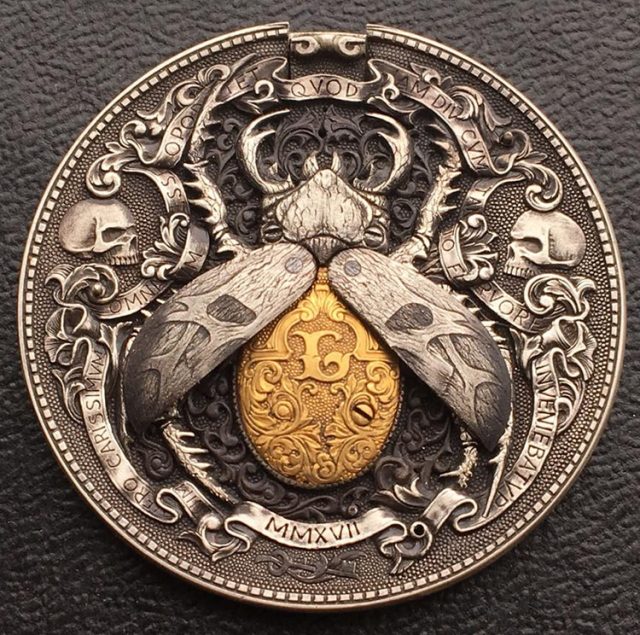
According to My Modern Met, this magnificent work of art features a series of intricately carved floral motifs, with images of skulls embedded into the design. The image is framed by a Latin quotation inscribed on the encircling ribbon, which roughly translates to, “the most expensive should be something that was sought longer and more intensively than others.”
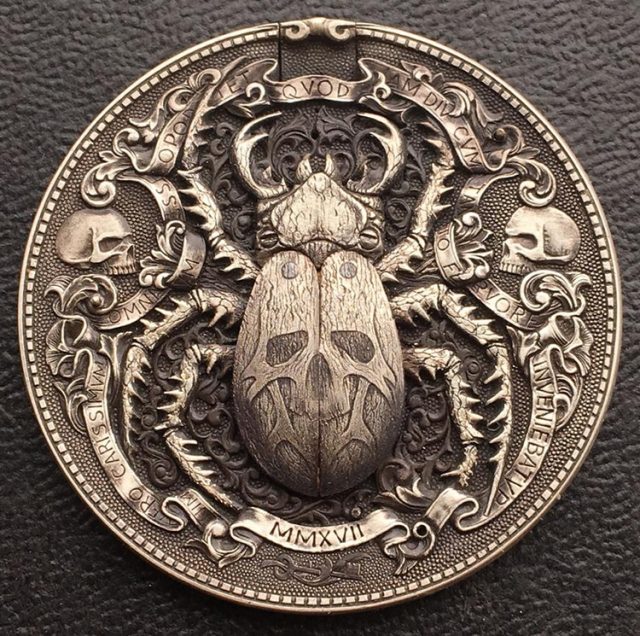
At the center of the image, the coin features the body of a beetle, with six carefully carved legs coming off from the main body. However, this elegant design conceals a valuable secret, revealed only by pushing a small button located on the coin’s rim. This launches a mechanism that opens the beetle’s wings, revealing the gold body of the insect underneath.
Related Video: Swing Wing Toy Commercial (1960s)
This 22-carat gold piece is completely obscured until the mechanism is triggered, making it a true piece of buried treasure within the coin. The hidden, golden body of the beetle is inscribed with the letter “L”, the Roman numeral for 50, in order to mark Booteen’s 50th hobo nickel.
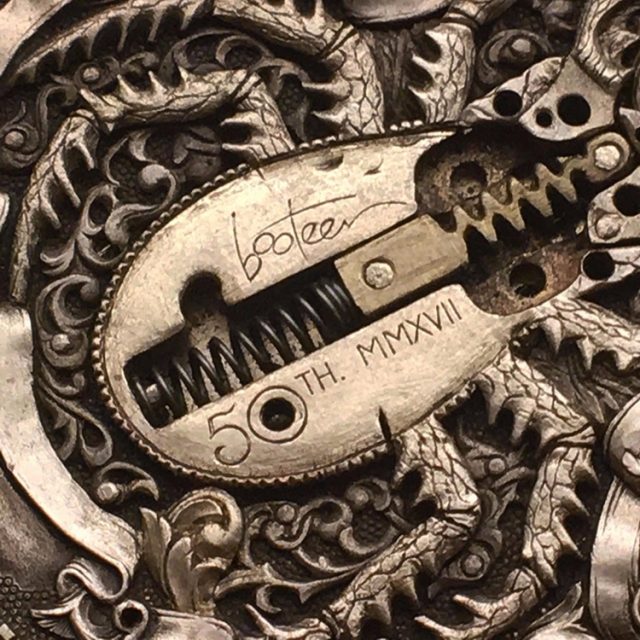
The hobo nickel art form emerged in the 18th century and was initially practiced by migrant workers and vagrants, who would carve images on to coins by hand as they made long journeys across the United States. The nickel, together with other low denomination coins, was the favored medium for such an activity, due to their low cost and soft, pliable material that was easy to carve.
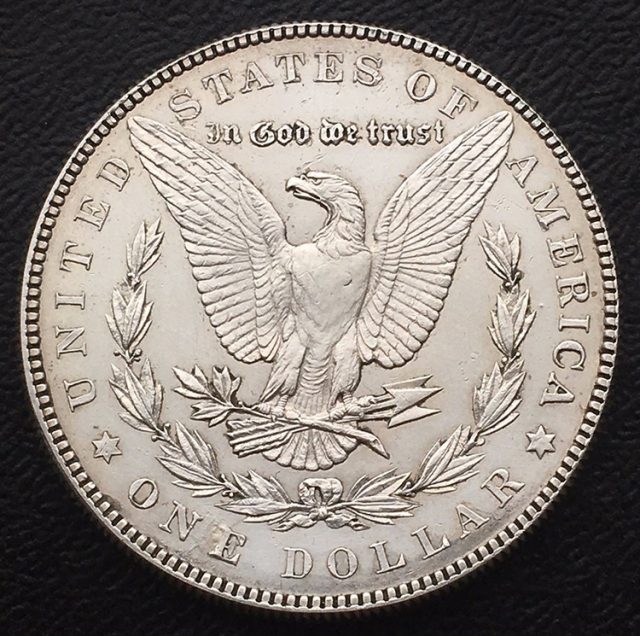
This art form soon became immensely popular, and often lampooned state iconography by transforming standard coin images into figures of fun. For example, one popular early design was the so-called “potty coin” in which the figure of Liberty was made to appear as though she was sitting on a chamber pot. Hobo nickels were also often bought as love tokens, carved with names, initials or images that could then be given to lovers or partners.
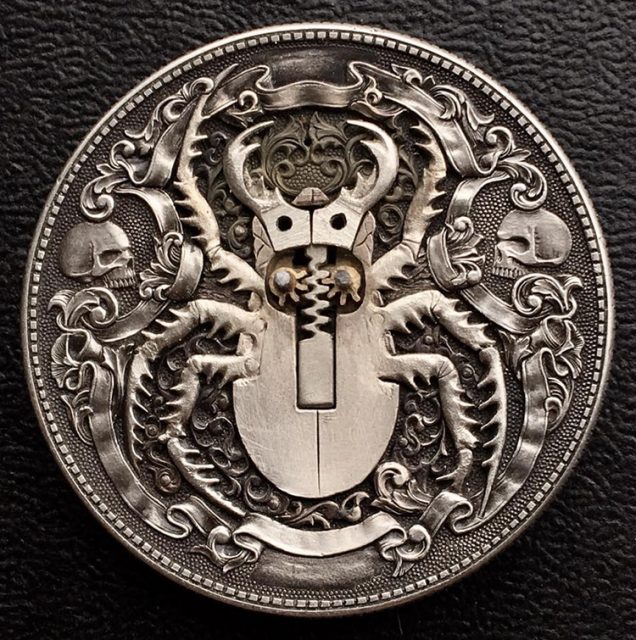
The art of coin engraving has remained popular since the 18th century, but modern artists are now finding new ways to create high quality, unique pieces of art motivated by this traditional practice.
According to My Modern Met, Booteen was also inspired by the work of Edgar Allan Poe, and particularly his short story The Gold Bug. This work, first published in 1843, is often considered as one of the first examples of detective fiction and tells the story of William Legrand, who is bitten by a golden colored bug. Along with two companions, Legrand deciphers a secret, hidden message and embarks upon a search for buried treasure.
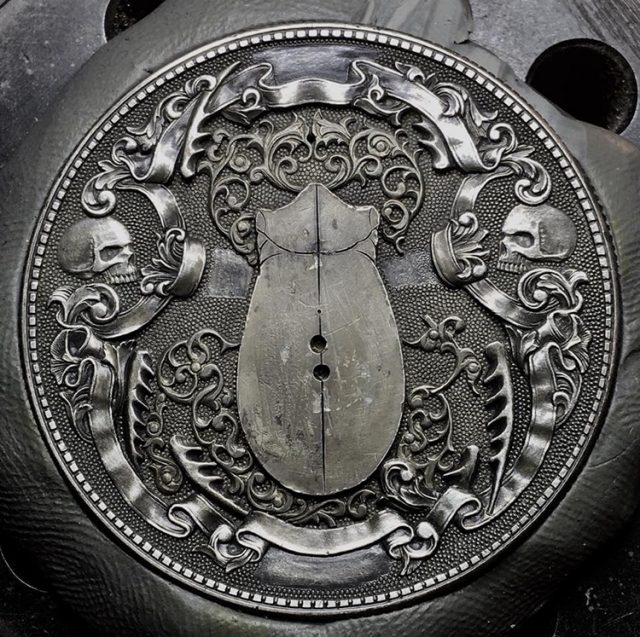
These themes are echoed in Booteen’s coin. The mechanism is revealed by a secret trigger and exposes the golden treasure beneath the beetle’s wings. The quotation also emphasizes the pleasure and worth invested in an object when it is more difficult to find, reflecting the themes of treasure-hunting and cryptography that pervade Poe’s short story.
Read another story from us: Artist creates miniature worlds within old pocket watches
Booteen’s magnificent Gold Bug is a true homage to Poe’s writing, and to the traditional practice of the hobo nickel. Moreover, hobo nickels continue to be in high demand for collectors, history buffs and coin enthusiasts. The Gold Bug sold at auction for over $9,000, demonstrating the ongoing fascination we have for these beautiful, miniature pieces of art.
